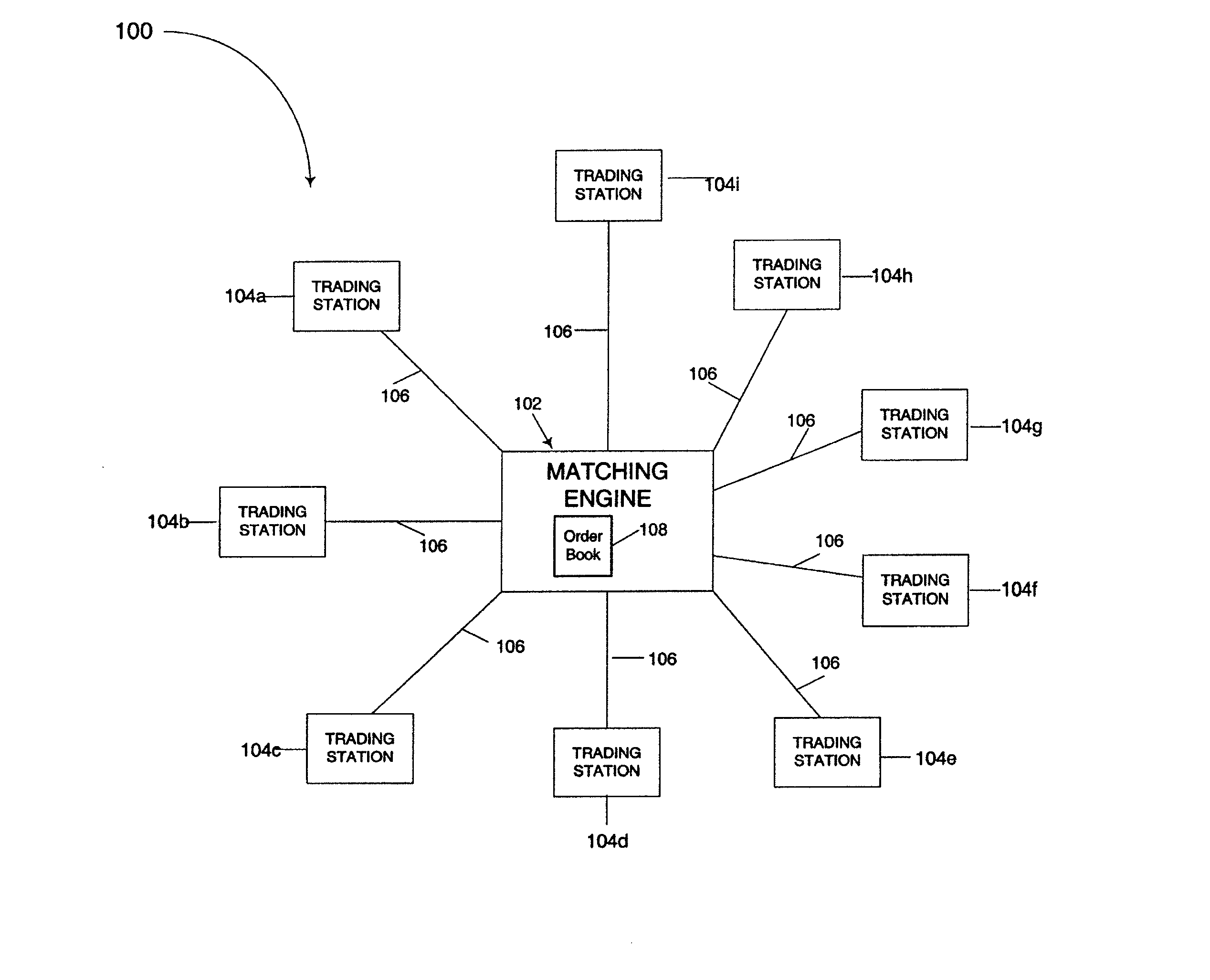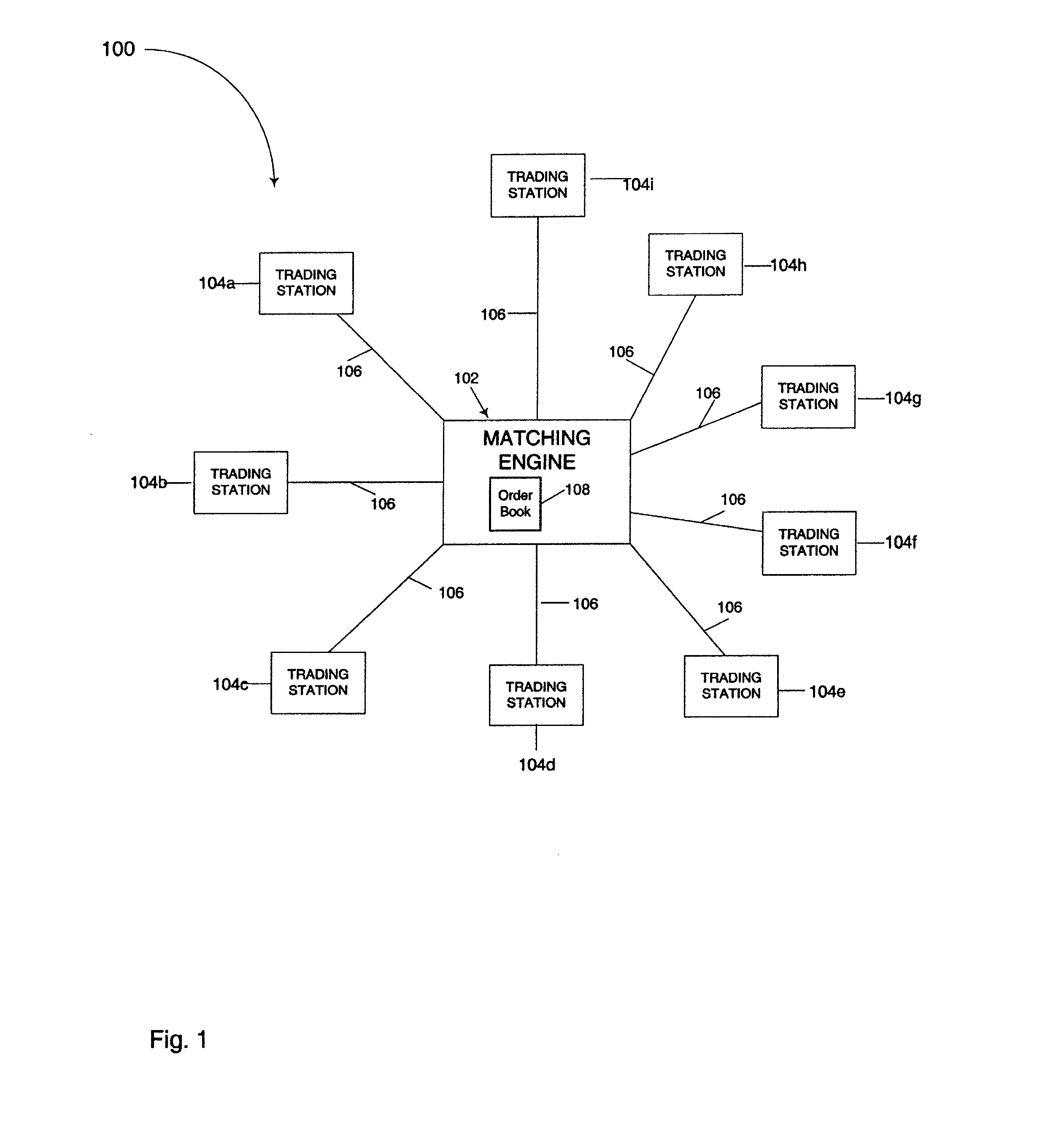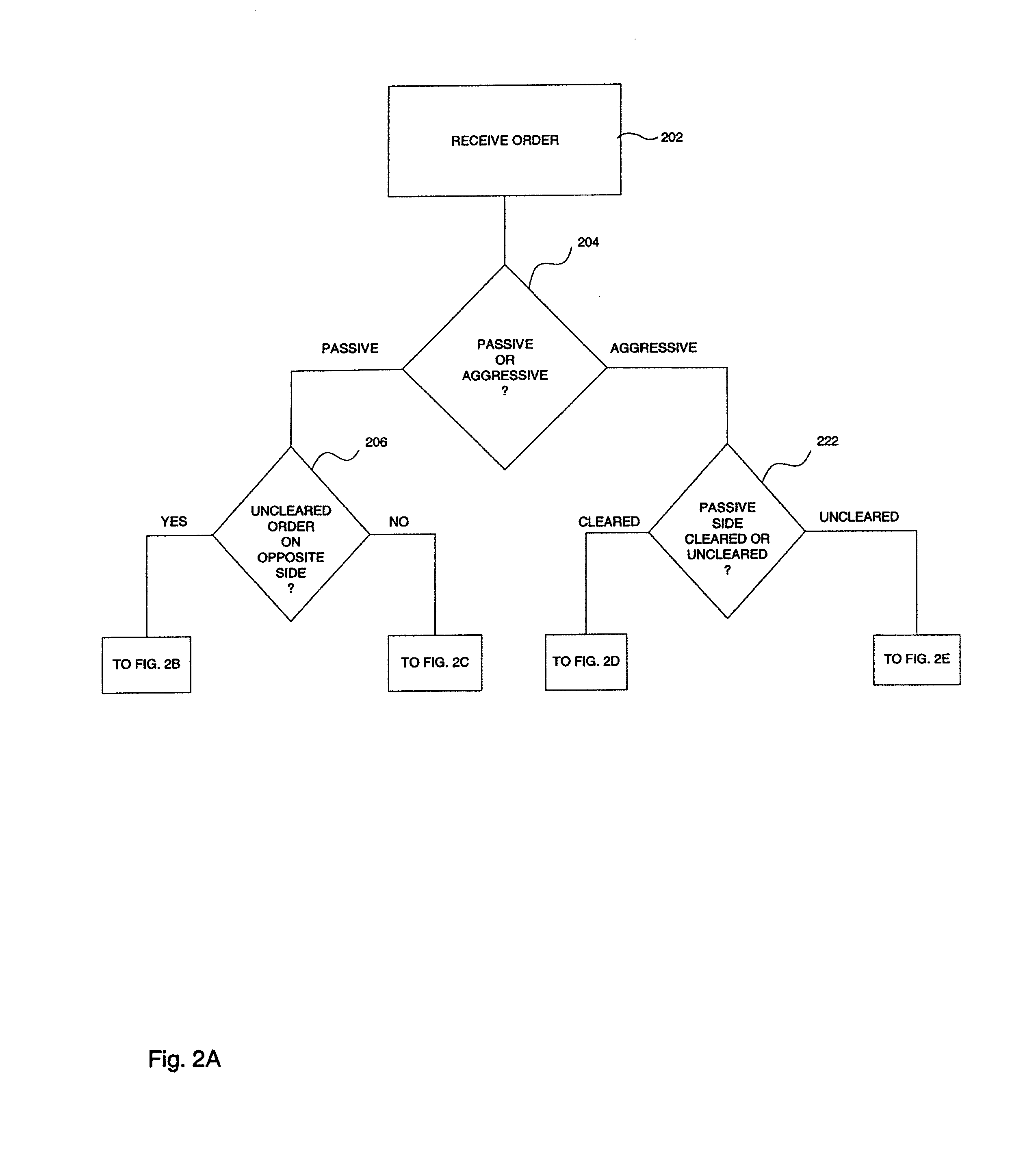System and method for processing trading orders
a trading order and system technology, applied in the field of system and method for processing trading orders, can solve the problems of not providing a mechanism by which traders without priority may enter passive orders at prices better than, order equal price cannot automatically match, and cannot be matched even at the same price, so as to improve trading efficiency and fair market opportunity distribution to system users
- Summary
- Abstract
- Description
- Claims
- Application Information
AI Technical Summary
Benefits of technology
Problems solved by technology
Method used
Image
Examples
example 2
[0047]1. A bids @ 4
[0048]2. B offers @ 7
[0049]3. C bids-when @ 5
[0050]4. D bids-when @ 6
[0051]5. E hits A's 4 bid
[0052]In this example, Trader E's hit is executed and the two bid-when orders of Trader C and Trader D are canceled. Trader D is designated second buyer and Trader C is designated third buyer. As noted above, because Trader D's bid-when order was at a better price than that of Trader C, Trader D becomes the second buyer behind Trader A. Had both Trader D and Trader C bid-when at the same price, time priority would have controlled their order in the buyer queue.
[0053]FIG. 4 is a flow diagram illustrating another preferred embodiment of system processing when a clearing period terminates. This preferred embodiment is designed to provide the current best bid / best offer with protection against being replaced as the best price in the market as a result of a bid-when / offer-when order. Specifically, in this preferred embodiment, a trader entering a passive order may specify a fi...
example 1
[0061]1. A bids @ 4, hidden price of 7
[0062]2. B offers @ 8
[0063]3. C bids-when @ 6
[0064]4. D bids-when @ 5
[0065]5. the clearing timer expires
[0066]Upon expiration of the clearing timer, the two bid-when orders of Trader C and Trader D are converted to regular bids at prices of 6 and 5, respectively. However, because Trader A bid with a maximum hidden price of 7, his bid will be re-priced to outbid that of Trader C and will be placed at the head of the queue, either at a price of 6 or at a price some specified increment above 6, depending on the preferred embodiment selected.
[0067]In a preferred embodiment, bid-when orders and offer-when orders may also be permitted to specify a hidden price. As will be recognized, in such a preferred embodiment, a “bidding war” may transpire when a bid-when or offer-when order is first converted to a regular bid or offer, and it may take several iterations of price increases to reach a new market steady state.
[0068]In other preferred embodiments of...
PUM
 Login to View More
Login to View More Abstract
Description
Claims
Application Information
 Login to View More
Login to View More - R&D
- Intellectual Property
- Life Sciences
- Materials
- Tech Scout
- Unparalleled Data Quality
- Higher Quality Content
- 60% Fewer Hallucinations
Browse by: Latest US Patents, China's latest patents, Technical Efficacy Thesaurus, Application Domain, Technology Topic, Popular Technical Reports.
© 2025 PatSnap. All rights reserved.Legal|Privacy policy|Modern Slavery Act Transparency Statement|Sitemap|About US| Contact US: help@patsnap.com



